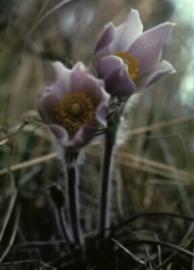The tundra biome: by Trennon Chapman, Mariah Ashe , and
Justyn Mitchell
From John Quincy Adams Middle School, Metairie, Louisiana.
Trennon Chapman is the Biosphrere specialist/sociologist, Mariah Ashe is the geographer/climatologist, and Justyn Mitchell is the Ecologist.
Location: Green=tundra

Alpine and Arctic regions.
Climate

Winter temperatures don’t reach above 20*F and average -20*F to -30*. •
Summer temperatures never get any warmer than 45 or 50*F . )
Description of the biome.

It is a cold place with little vegetation. The sun shines 24 hours a day, it's sometimes called "The land of the midnight sun."But in this biome even the sun can't keep it warm.
Man's impact on this biome:When we drive cars or walk around on the soil or little vegetation it has, it destroys the permafrost and vegetation just moving the tundra in the succession progress.
Polar bear: by Trennon Chapman.

The polar bear has two layer of fur to keep it warm in the cold, snowy biome.
Their teeth and claws are very sharp so it is easier for it to kill it's prey, such as the seal.
Their teeth and claws are very sharp so it is easier for it to kill it's prey, such as the seal.
Grizzly bear: by Trennon Chapman.

Like the polar bear it also needs it's fur to survive in the cold climate of the tundra biome.
It has incredible strength to kill it's prey.
It has incredible strength to kill it's prey.
Arctic fox: by Mariah Ashe.

One adaption of the arctic fox is it's fur is white so it can blend into the snow of the tundra biome.
Another adaptation is it's speed and stamina to capture it's prey.
Another adaptation is it's speed and stamina to capture it's prey.
Caribou: by Justyn Mitchell.

It's fur keeps it warm in it's cold and frosty environment.
The caribou's speed help it stay away from predators most of the time.
The caribou's speed help it stay away from predators most of the time.
Pasque flower: by Trennon Chapman.

The pasque flower grows close to the ground so it stays out of the cold climate.
It is also covered in fine silky hairs, which help insulate it.
It is also covered in fine silky hairs, which help insulate it.
Caribou moss: by Trennon Chapman.

The caribou moss is make up of lichens and algae and they both support each other.The spongy thread of lichens supports and protects the algae.
The algae has chlorophyll which can make food for the lichen.
Lloydia serotina: by Mariah Ashe.

It is a arctic-alpine flowering plant of the lily family. It's the only member of genus lloydia to live outside central and eastern Asia, and is widespread across the western North America.
It was was originally known as mountain spiderwort, but is now known in Great Britain as the snowdon lily, or in the Welsh as brwnynddail y mynydd (meaning "rush-leaves of the mountain.
It was was originally known as mountain spiderwort, but is now known in Great Britain as the snowdon lily, or in the Welsh as brwnynddail y mynydd (meaning "rush-leaves of the mountain.
Bearberry: by Justyn Mitchell

Since bearberry is a low growing plant it can stay out of the wind chill.
It's fine silky hairs also help to keep it warm.
It's fine silky hairs also help to keep it warm.
Description of our roles in this environment:
Trennon Chapman is the Sociologist so he identifies the information of the animals and plant in the tundra biome.
Trennon is also the Biosphere specialist so he also studies living organisms and their environment/tundra biome.
Mariah Ashe is the Geographer/Climatologist so she studies the earth and it's features and the distribution of life and she has to study the climate/weather in this biome.
Justyn Mitchell is the Ecologist so he studies relationships of organisms and their environment.
A tundra is a far-northern biome characterized by long, cold winters, permafrost, and very few trees.Permafrost is the permanently frozen ground below the soil's surface in the arctic tundra.The tundra biome is 1/10 of the earth's land area.
Trennon Chapman is the Sociologist so he identifies the information of the animals and plant in the tundra biome.
Trennon is also the Biosphere specialist so he also studies living organisms and their environment/tundra biome.
Mariah Ashe is the Geographer/Climatologist so she studies the earth and it's features and the distribution of life and she has to study the climate/weather in this biome.
Justyn Mitchell is the Ecologist so he studies relationships of organisms and their environment.
A tundra is a far-northern biome characterized by long, cold winters, permafrost, and very few trees.Permafrost is the permanently frozen ground below the soil's surface in the arctic tundra.The tundra biome is 1/10 of the earth's land area.
Producers: Arctic moss, arctic willow, bearberry, caribou moss, diamond-leaf will, labrador tea, pasque flower, and tufted saxifrage.
Predators: Arctic fox, grizzly bear, polar bear, and snowy owl.
Preys: Caribou, ermine, harlequin duck, and musk ox.
Scavengers/decomposes: Snowy owls and arctic foxes.
Predators: Arctic fox, grizzly bear, polar bear, and snowy owl.
Preys: Caribou, ermine, harlequin duck, and musk ox.
Scavengers/decomposes: Snowy owls and arctic foxes.


